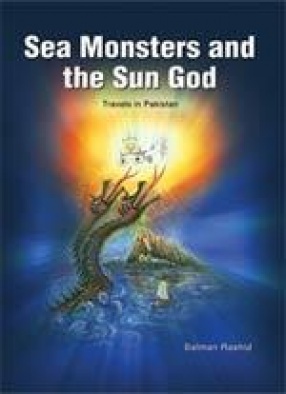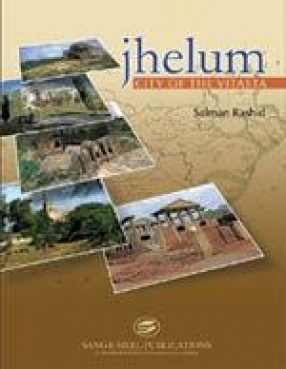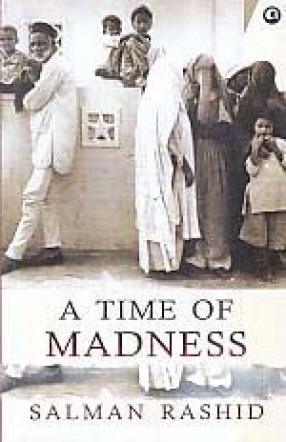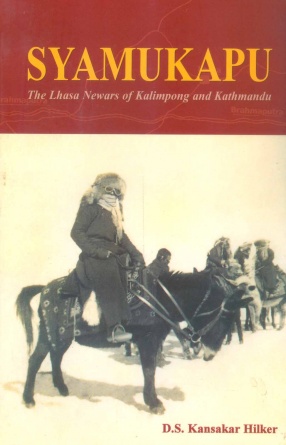Sea Monsters and the Sun God
Synopsis
Salman Rashid takes you on a journey through the hills, wooden balconies and picturesque towns of Pakistan Safed Koh — White Mountain, once glistened with snow the whole year round. The mountain is so named, wrote Babar the Mughal, “because its snow never lessens.†Having made himself master of the Kabul valley in 1504, Babur described the range as running south of Ningarhar (Afghanistan) dividing that province from the country of the Bangash Pakhtoons. There were, he wrote, no “riding roads†across the mountain — only narrow, precarious footpaths. Little has changed since the time of the Mughal, except that global warming has put paid to the everlasting snow. In grim jest the educated of Parachinar, the quaint little town at the foot of the southern slopes of Safed Koh, now call it Siyah Koh in Persian or Torghar in Pushto, Black Mountain. I arrived in Parachinar with hopes of climbing Sikaram, at 4761 metres (15,620 ft), the highest peak in the Safed Koh range. There on the peak, it was said, was a shrine and also great views not only into Paktiya province but also Ningarhar right up to Jalalabad. Friends in high places made arrangements that introduced me to Major Dil Nawaz Khan of the Kurram Militia. A full blooded Yusufzai with a stern, hawkish face and small body, he had climbed the mountain only three weeks earlier and was meant to brief me on the route to be taken. Ten minutes into it, he abruptly brought the discussion to an end by saying there being no proper guides, he was taking me up himself. He said he would make necessary arrangements and I was to call him later in the afternoon for details. And so it was ordained by the good major that we depart Parachinar at 2:00am in order to get to the end of the jeep road early enough to be able to climb the mountain and return in time for dinner. He had, moreover, arranged for "the old man" who knew the mountain well, to be our guide. The old man of the mountain: shades of Hasan bin Sabah, the infamous 13th century leader of the Assassins! Now, that sounded good to me. We drove out at just after two in the morning. Forty-five minutes out of Parachinar on the old road to the Afghan frontier (by Peiwar Kotal) we picked up our guide from a militia post. With a serious deficit of teeth in his mouth, Juma Khan, a Kharote Pakhtoon, seemed about 60, but was perhaps no more than 50 and as fit as any mountaineer can be. He said he knew the mountain well from the days of his youth spent roaming its wooded slopes both as a shepherd and in search of game. The way to the shrine he could find blindfolded, he added for good measure. Thirty minutes later, in the quickening light at about 3:30 in the morning, we halted on the banks of a dry stream by the summer settlement that goes by the unpronounceable name of Vachakharwalasar — with more letters to its name than the sum total of its population. Besides the major and Juma Khan, our party consisted of Captain Shahid, chubby and seemingly rather ill-conditioned, and Aqeeq Bangash, a geologist, with his languorous face and easy, unhurried manner. Corporal Dildar Hussain and Lance Corporal Lal Hakim made up the escort. Cups of tea, the only breakfast that day, were passed around, Major Dil Nawaz apportioned out some dry fruit and toffees and we were ready to go. I asked what we were doing about lunch. “We forget it!†said the Major with simple finality. The mountain rose darkly against the lighting sky. Pointing out the ridge and the kandao (pass) through which we were to ascend, Juma strode out at the head of the party. Across the dry stream bed we went up the slope, climbed the ridge and turned north along its crest. High above us the peak of Sikaram rose in a jumble of jagged crags. To the west the contours fell to a valley floor still swathed in darkness with a few pinpricks of light marking human habitation. That was the Paktiya province, said Juma Khan, and if we took the path winding down to the left we would be in Afghanistan in less than 30 minutes. Paktiya, an ancient land, culturally rich in prehistoric and classical times, reverted to savagery in the name of religion by sub-humans who have neither an understanding of religion nor of the norms of humanity. Paktiya, first mentioned by Herodotus, the father of history, in the 5th century BCE, was just beginning to wake up far below us. In Chapter 102, Book III of The Histories, Herodotus writes of this land of "warlike people" as the "country of Paktyika; (whose) people dwell northward of all the rest of the Indians, and follow nearly the same mode of life as the Bactrians." Our historian apparently gleaned this information from the work of the Greek admiral Skylax who was ordered by Darius the Great, the king of Persia, to reconnoitre and map the river that my ancestors called the Sindhu and which the Greeks transliterated into Indus. Skylax undertook his journey in the year 512BCE - a full 50 years before Herodotus wrote his Histories in which he quotes a portion of the Greek sea captain's undertaking and findings.
Read more
135.00
121.5
$
150.00 $
Free delivery Wolrdwidе in 10-18 days
Ships in 3-5 days from New Delhi
Membership for 1 Year $35.00
Get it now and save 10%
Get it now and save 10%
BECOME A MEMBER
Books by the same author









Bibliographic information